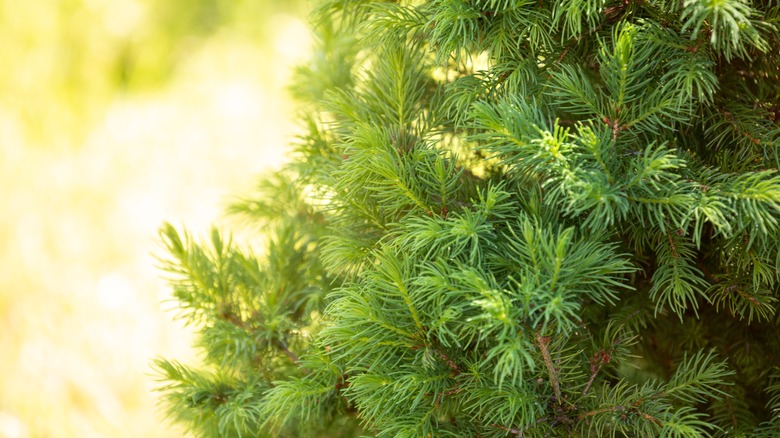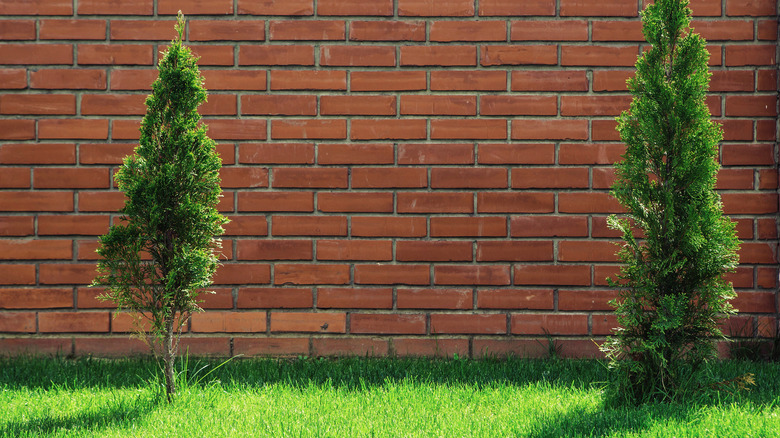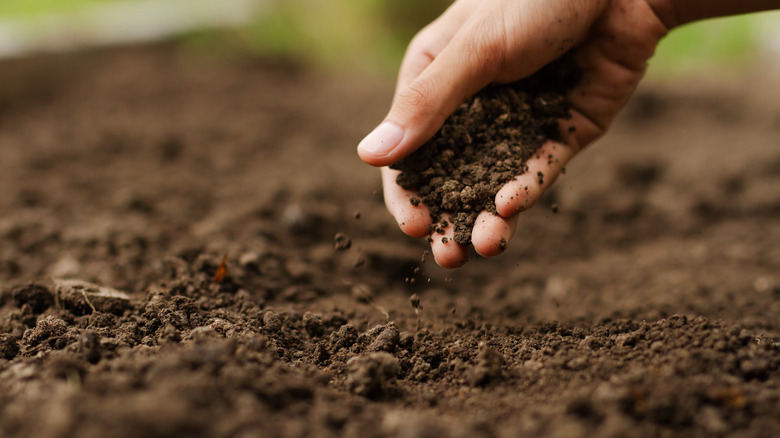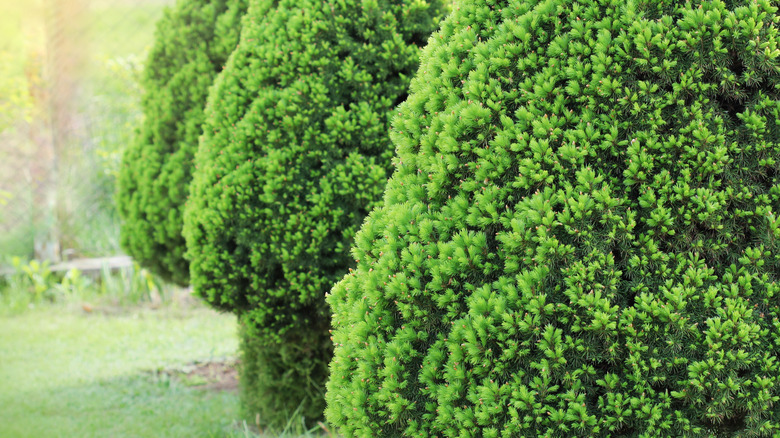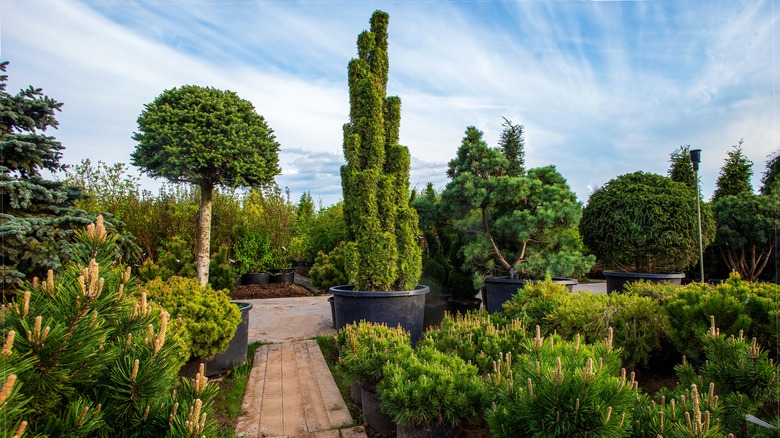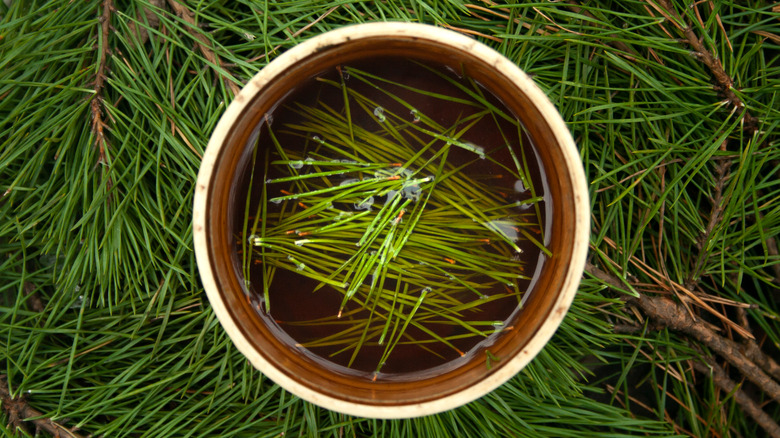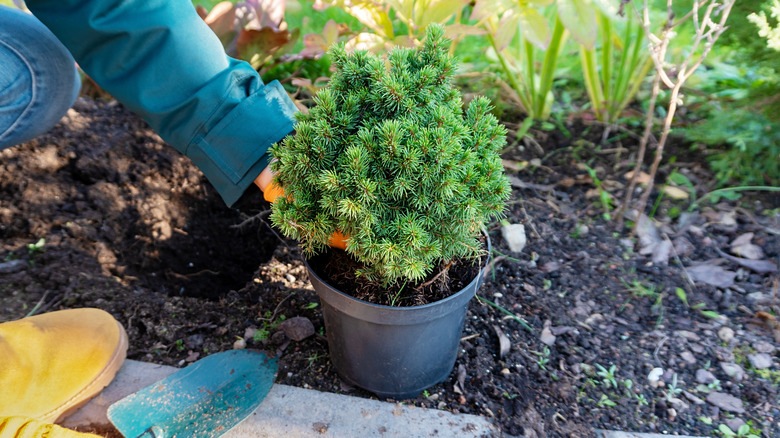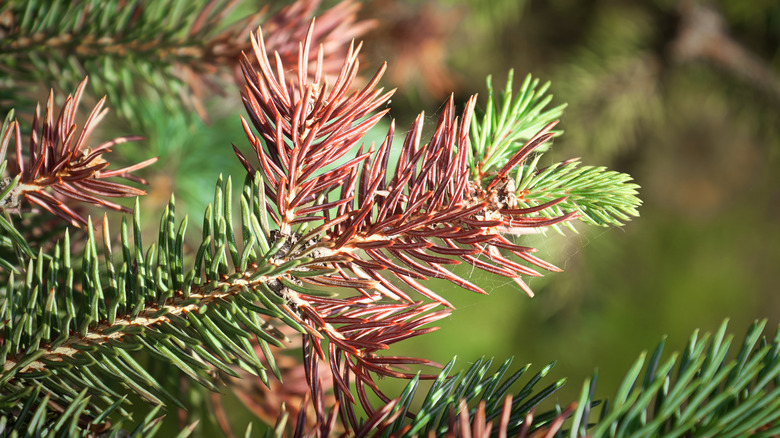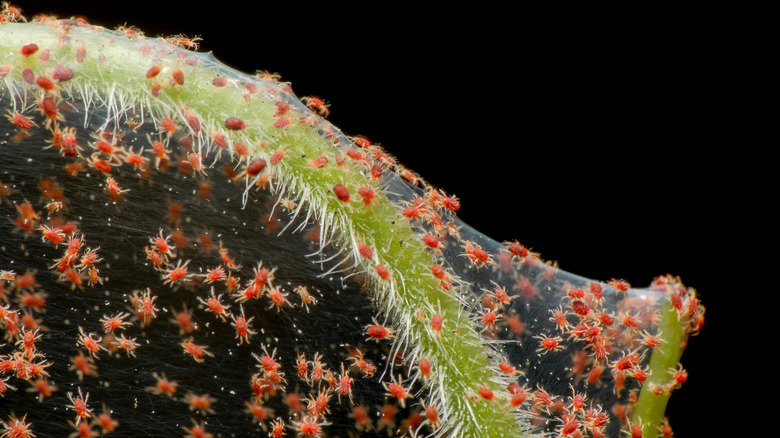All You Need To Know To Take Care Of Dwarf Alberta Spruce Shrubs
If you are looking for an easy plant that can perfectly accent your yard, the dwarf Alberta spruce shrub (Picea glauca "conica") is the plant for you. According to Garden Guides, the dwarf Alberta spruce shrub was first discovered in the North Rockies of Canada by two botanist in 1902. This was in the Alberta province near the area of Lake Laggan. The botanist brought the tree down to Massachusetts and learned how easily it could reproduce and spread, making it a popular tree across much of the norther regions of the United States. Although these trees still have the ability to grow in warmer environments, they do not react well to extremely hot or humid weather.
The dwarf Alberta spruce shrub is a petite relative of the Spruce tree (Picea glauca), which can often get as tall as 60 to 80 feet in height (via American Forests). The dwarf Alberta spruce, however, only grows to approximately 8 feet tall and 5 feet wide, the perfect size for a small garden. They are slow growing tree; therefore, you don't have to worry too much about them outgrowing their area and work wonderfully as potted plants. These shrubs are also evergreen, making their presence add consistent cooler and texture to your yard. Rarely ever needing a trim, their evergreen foliage naturally remains in a perfect cone shape year-round, even making them a popular Christmas tree choice (per NatureHills.com)
How to use dwarf Alberta spruce shrubs in garden
The dwarf Alberta spruce shrub is a cute, miniature tree with a naturally perfect cone shape and evergreen needles. They are slow growing, averaging 2 to 4 inches every year, making them perfect potted plants and worry-free additions in a small garden setting. According to HGTV, dwarf Alberta spruce shrubs can act as a perfect focal point for your yard, with the variety of features it naturally provides. They can draw attention to whichever area you plan to place them, but ensure that wherever you place the shrub, it remains in a place it can thrive with plenty of sun and well-draining soil.
These shrubs are commonly planted near an entrance or lining a pathway to your home. For example, placing two dwarf Alberta spruce shrubs around your front porch can draw attention to your front door and welcome guests as they come to visit. In a garden, they can also line paths and add a bit of formality to the area. These shrubs are also fun to shape. If your spruce tree has a habit of developing dead spots of brown or completely losing needles, they can easily be shaped around the area into fun styles and shapes for your yard.
How to grow dwarf Alberta spruce shrubs
Dwarf Alberta spruce shrub seeds grow in cones that are best plucked from the shrub before they ripen. The cone will dry out and open, releasing the seeds. These seeds should be harvested around the mid-fall time frame for the best results. To influence the seed's germination process, start by scarring the outside of the seeds and transition them from a cool to warm environment, signaling their growing season's arrival. The Spruce states this transition can be done naturally or artificially. When planting the seed outside during the mid-fall time frame, they will transition naturally. However, when planting the seed outside, ensure the seed is a sheltered environment.
For the artificial approach, plant the seed ¼ inch deep in a soil filled pot. Add a bit of sand and peat moss to the seed for extra nutrition, then wrap the pot in plastic and place in the back of the fridge. After about three months, move the pot to a warmer, but still cool, environment, like the garage or basement. As spring approaches, allow the plant to receive six to eight hours of sunlight daily as it officially begins its germination process. Before planting the shrub outside, allow it to harden off in a sheltered outdoor area, receiving filtered light (via P. Allen Smith). The plant should remain in its sheltered environment for the same amount of time it spent indoors before being planting into its permanent position, or placed in a full-sun area.
How to care for dwarf Alberta spruce shrubs
When you first plant your dwarf Alberta spruce shrub you must ensure it receives plenty of water, as it grows best in very moist soil. After first planting the shrub, water it deeply using a hose or any source of low streaming water, allowing the soil to better absorb the water. This will moisten the soil surrounding the newly planted dwarf Alberta spruce shrub. Because these shrubs are somewhat drought tolerant, once the roots have established in their new environment, you can start cutting back on the watering, but ensure the soil remains moist until the ground freezes in the winter (per SFGate).
The Spruce encourages dwarf Alberta spruce owners to present their shrubs with plenty of sunlight as well. They best preform in full or partial sun; however, precautions must be made if you live in a rather warm environment. Warmer environments tend to have a harsher afternoon sun, which could potentially fry your dwarf Alberta spruce shrub; therefore, avoid planting in direct sunlight if your environment tends to be rather hot.
Pruning is not necessary for this type of plant; however, SFGate mentions that dwarf Alberta spruce shrubs can easily revert into original Spruce trees under the right conditions. That being said, if you see branches sprouting from your shrub that look unusually for your petite tree, simply cute them off.
Dwarf Alberta spruce shrub varieties
The dwarf Alberta spruce shrub originated from its ancestor tree, the original spruce tree (Placia Glauca). Unlike the dwarf Alberta spruce's petite size, white spruce trees can grow to nearly 60 to 80 feet in height (per American Forests). Just as spruce trees have a variety of types, so does its petite counterpart. World of Garden Plants mentions that when it comes to dwarf Alberta spruce trees, there are three main types you can choose from: Jean's Dily, Rainbow's End, and Tiny Tower.
The Jean's Dilly shrub is a shorter version of dwarf Alberta spruce, averaging only 5 feet tall. Regardless of height, however, this spruce shrub has distinct twists of evergreen needles. The Rainbow's End shrub grows a bit taller, averaging 8 feet tall and has a second flush of growth during its mid-growing season. This is where foliage turns a yellow-green to creamy yellow color. Lastly, the Tiny Tower shrub has a perfect pyramid form made of bright, evergreen needles. Regardless of the type of spruce shrub you choose, you can add a unique look perfect for your small garden.
Are dwarf Alberta spruce shrubs toxic?
The dwarf Alberta spruce shrub, along with other species of spruce trees, are not poisonous plants. Although not many people are inclined to eat a spruce tree, their needles were once used to make tea, which Eat The Planet says is a rather flavorful tea. The inner bark of spruce trees were also once eaten by Native American tribes, which prevented starvation throughout the winter. It is even said to be high in vitamin C.
For pets, The Spruce Pets states that spruce trees and their relatives are non-toxic to household pets. Although consuming large amounts needles from the tree can give your animal companion an upset stomach or cause oral irritation, they are not deadly; therefore, they are safe to bring to a household with pets. So, whether you're looking for a tree to accent your yard or a Christmas tree to decorate for the holidays, the dwarf Alberta spruce shrub would be a beautiful and safe option.
How to repot dwarf Alberta spruce shrub
If your dwarf Alberta spruce shrub is located in a pot on your patio or balcony, you need to think about repotting them as they continue to grow. Before repotting, however, ensure that the pot you will be using has drainage holes at the bottom along with a tray that is at least 2 inches larger than the pot you are using. SFGate says to start by filling the new pot with 3 to 4 inches of equal amounts of soil and sand. Add in about 5 to 10 tablespoons of fertilizer to the mixture, then remove your shrub from its current pot. When removing, ensure the shrub's root ball stays intact through the transfer. If there are stray roots exceeding the ball, remove them before placing the shrub into its new pot. Place the shrub in the center of the new pot and hold the tree firmly as you fill in the gaps around the plant with soil. Continue filling in the soil until you reach 2 inches from the top of the pot.
When you are finished adding in the soil, water the plant until you begin to see water start to drain out of the draining holes at the bottom of the pot. This ensures that the soil in the pot is completely moist. Finally, finish by adding a 2-inch layer of mulch to the top of your soil to help keep the soil underneath moist.
Common problems with dwarf Alberta spruce shrubs
Knowing the common problems that impact your shrubs can help counteract the problems that are already occurring or prevent them outright. Garden Answers mentions that dwarf Alberta spruce shrubs are not tolerant to salt sprays. In the winter, you may be using different types of salt to melt the snow on your driveway or around your house, but salt build-up or even small splashes could be harmful to the shrub. You can either prevent this issue by avoiding these products around your shrubs, or you can counteract the problem by adding compost to your shrub's soil in the spring. Compost is said to help filter salts out of the soil, ultimately helping your plants thrive.
Spruce trees are best suited for cooler, dryer environmental conditions; too much heat and humidity can cause harm to your dwarf Alberta spruce shrub. To prevent moisture build-up in humid environments, ensure your shrub has proper air circulation. Keep space between your shrubs, and always check to make sure the soil around the shrub remains moist (per Triblive).
The Spruce mentions another problem with dwarf Alberta spruce shrub is the browning of their vibrant, evergreen needles. This problem can be cause by a variety of things like exposure to harsh temperatures or environment, over-watering, or the shrub being overcrowded. Always trim off the browning area to encourage healthy growth in its place, then identify the cause of browning and adjust the plant accordingly.
Common pests of dwarf Alberta spruce shrubs
The most common pest that can harm your dwarf Alberta spruce shrub is the spider mite. Spider mites are super small sucking arachnids that can quickly inhabit and destroy the plants both in your home and in your garden. These pests are often live in climates that are dry and warm where their predators have been already extinguished by insecticides. They feed on leaf tissue, which causes the formation of yellow spots throughout the foliage, eventually leading to the dropping of needles.
Plant Natural Research Center mentions that the best way to get rid of these pests is through natural and organic methods because the use of chemicals can strongly encourage the growth of this pest. Always start by removing the infested and diseased parts of the plants. Be sure to completely throw the removed pieces away. Do not put them in a compost because that could encourage the pests to spread to another area of your garden. Bug blasters that use water to reduce the number of pests on the plant can also help you regain control over your shrubs. Shrubs under water-stress tend to be more susceptible toward spider mites; therefore, ensuring your shrubs are properly watered can also counteract spider mites. If all else fails, organic and biological insecticides, like Nuke Em and BotaniGard ES, can quickly kill and prevent spider mites as well as other pest from spreading through your shrubs.
